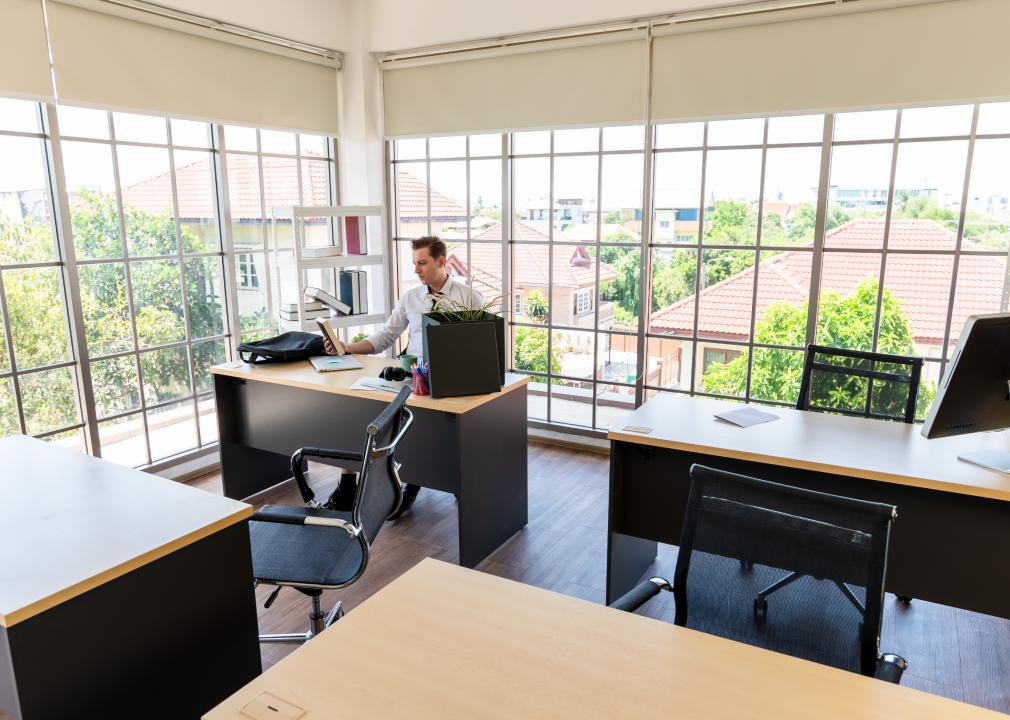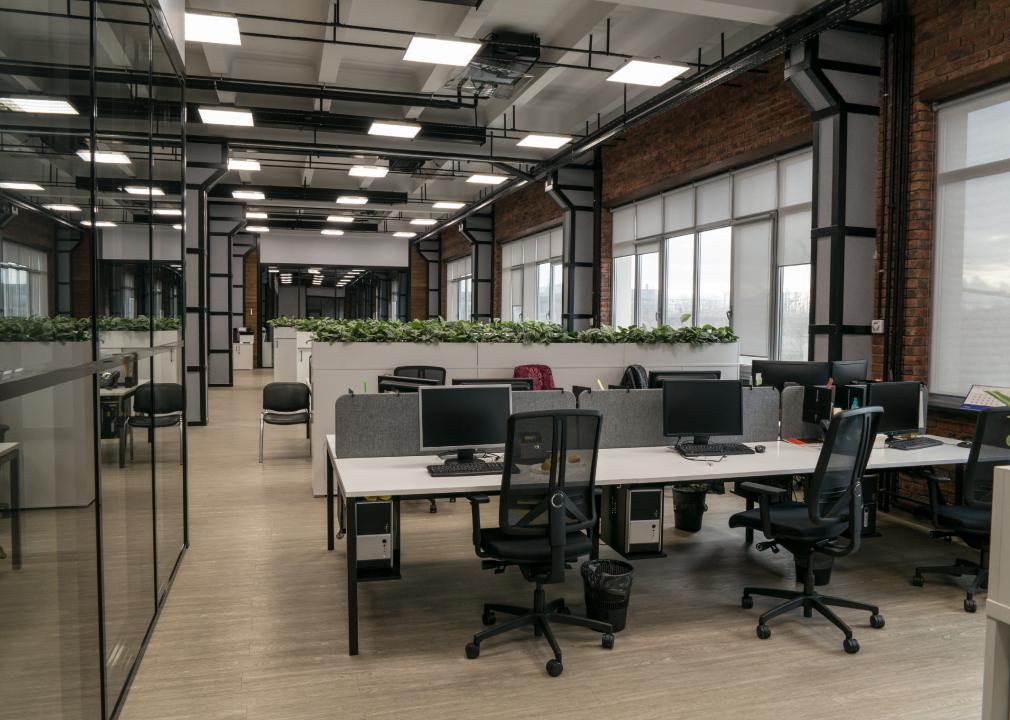10 challenges facing hybrid work models
Published 9:30 pm Wednesday, November 10, 2021
Pressmaster // Shutterstock
10 challenges facing hybrid work models
When the coronavirus hit the country from every direction almost two years ago, public safety measures found workers at all levels scrambling to perform their job tasks from home, creating unprecedented remote models across the country. Today, as workers cautiously move into the next phase of the pandemic, work leaders are debating whether to and how to safely bring their employees back into the offices.
While some companies intend to bring all workers back to an office-first model, others are opting for a hybrid model in which employees break up their work weeks between remote and in-office time Hybrid office models may also incorporate some completely remote workers and others who work at the office in person every day.
The pandemic gave workers the time and space to contemplate what they valued in a workplace with many utilizing the flexibility of working from anywhere. Some employees enjoyed spending more time with family and prioritizing work-life balance over stressful commutes and office politics.
As workplaces balance the return to the office with public health measures and employee desires, Pyn considered 10 challenges hybrid offices face, from managing who comes in when to who has access to career advancement.
![]()
mavo // Shutterstock
Watered-down office culture
Historically, office culture has developed through office rituals that are dependent on everyone being in the same physical space at the same time. In an organizational culture article in The Harvard Business Review, Pamela Hinds and Brian Elliott state corporate cultural beliefs and norms are more open to outside influences when the workforce is remote, and they cite examples of companies shifting to virtual celebrations and codifying expectations for how team members should interact and support one another while working from home. A recent Gartner survey found that 76% of respondents reported their company’s culture had improved with the advent of remote work. Employees who noted improved culture were more likely to stay at the company and be highly engaged with their work.
Vasin Lee // Shutterstock
Enticing workers to return to the office
Many companies are bringing employees back under a flexible working arrangement, but what happens when too many employees want to maintain the flexibility of working from home? Polling employees to find out what they would need in order to return to the office may help ease the tension. Finding out why employees don’t want to return to the office is the first step to adjusting protocols so more people will want to return. HR Morning suggests creating a “why we come to work” document highlighting the benefits of in-person work. This document should touch on connection, collaboration, creativity, and workplace culture.
Monkey Business Images // Shutterstock
Overcrowding should too many people come back on the same days
If a flexible working arrangement is leaning toward in-person work, there may not be enough space or support for everyone without crowding. To encourage hybrid staff to come in on less popular days, catering meals on the least popular days may be one solution. Alternatively, calling less popular days “quiet days” where employees can work without interruption may entice more to come into the office. The Harvard Business Review suggests not allowing employees to choose their own work-from-home schedule and instead assigning which days people need to come into the office. This strategy will ensure a diverse number of employees are in the office on any specific day while mitigating the issue of too many people in the office at once.
Vera Petrunina // Shutterstock
Inconsistent communication and transparency
Poor communication has been cited as the main factor in employee morale issues, according to Recruiter. Beyond impacting morale, lack of communication can lead to confusion and isolation among remote workers who feel out of the loop. Sharing all formal communication in writing, even if the same information has been discussed in a meeting, means both employees in the office and those working from home have a synchronous access to the information. Competence, benevolence, and integrity are the three key factors that lead to trust according to organizational psychologist Sesil Pir. Having consistent, weekly meetings; clear and efficient means of two-way communication; and relying on systems to keep everyone informed will ensure transparency in the hybrid office.
fizkes // Shutterstock
Equal access to promotions and career advancement
Because employees in the office are more visible to their colleagues, there is a risk they will be able to advance their careers further than colleagues who work remotely. An article in the journal Work and Stress found perceived inequality among employees breeds resentment and leads to turnover. Sociologist Tracy Brower suggests employers be very transparent about work-from-home policies and job expectations. Ensuring leaders are truly accessible to the entire workforce and checking in with reports regularly will help mitigate competition for attention. When everyone is seen and heard, promotions are more easily given to those who meet their objectives and not simply those who have the most face time with leaders.
Maksim Zaytsev // Shutterstock
Underutilization of on-site workspaces
There may be meeting rooms, hot desk areas, or other communal workspaces that aren’t getting used as employees return to the office. Highlighting these spaces in an email or at team meetings in case people simply aren’t aware of them can be one solution. Creating signs to direct people to the less-used spaces or giving the spaces names can also encourage use. Another creative solution to office space can be inviting small businesses to operate out of underutilized office spaces. Places where employees can eat, drink, shop, or run other errands during the work day may also entice more workers to return to the office.
Aila Images // Shutterstock
Unconscious bias that favors in-person workers
Remote workers have less “passive face time,” or time being seen in the workplace, than their in-person colleagues. MIT research shows that even proactive, hard-working remote employees earn smaller pay raises, fewer promotions, and score worse on performance reviews than their in-person colleagues. Managers should instead be trained on performance monitoring and evaluation tools that allow them to objectively evaluate employees regardless of passive face time. Remote employees should also actively maintain their work relationships through regular catch-ups outside of regular meetings. Since remote workers can’t bump into their coworkers in the office, it’s even more important for remote workers to check in often so when new projects or promotions come up, they’ll be top of mind.
LightField Studios // Shutterstock
Managing and maintaining a consistent work-life balance
Hybrid work can promote work-life balance with reduced commute times and less stress. A 2021 Gartner report highlighted the importance of leaders explicitly telling their employees about the signs of burnout, including exhaustion, poor sleep, physical aches and pains, and negative feelings about work. Burnout can be prevented by creating micro-goals and micro-wins. Developing a culture of gratitude so individuals and teams can celebrate small steps toward a larger goal can also help. It’s important to schedule breaks, exercise, naps, and a clear end time for the work day. A fake commute where remote workers walk around the block, cycle, or perform some other daily ritual that separates work time from the rest of the day can help prevent work from creeping into overtime.
fizkes // Shutterstock
Maintaining employee camaraderie and close working relationships
Close working relationships allow employees to get creative and prevent silos of knowledge from forming. Scheduling in-person retreats, summits, or conferences where all team members can interact in person and have casual conversations will help build relationships in the office. It’s also important to keep video conferencing hardware and software updated. High-speed, easy-to-use technology by those meeting in person and those dialing in can enhance working relationships. Training meeting facilitators on hybrid meeting best practices also helps keep remote workers included.
Yuganov Konstantin // Shutterstock
Overall employee well-being
A study in the Journal of Occupational and Environmental Medicine found a decrease in physical and mental health while working from home. This decrease was attributed to a variety of factors, including exercise and food, home workspace setup, and whether children were present at home. The Centers for Disease Control and Prevention recommends communicating openly with supervisors, and setting a regular schedule including when to work, exercise, eat, and relax as steps employees can take to mitigate the stress that leads to burnout. Mindfulness can help employees detach from work, improve attention to work tasks, and allow employees to recover from screen fatigue. There also are numerous apps available to help employees learn how to look after their mental well-being with meditation.
This story originally appeared on Pyn
and was produced and distributed in partnership with Stacker Studio.
















